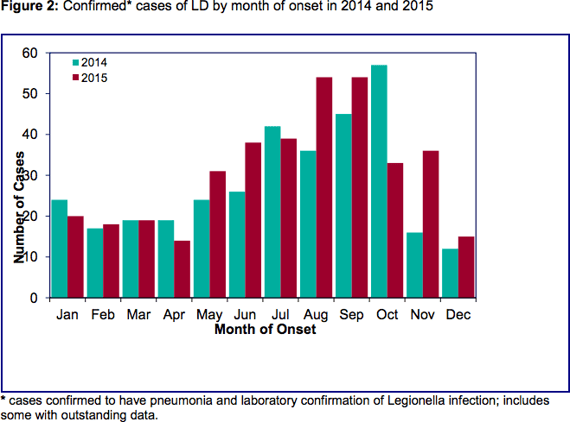
Did you know the legionella bacteria has only been known to science since the 1970s? Back in July 1976, there was an outbreak of a “mystery disease” among people who had attended a convention of the American Legion, an organisation for US military veterans. 221 people fell ill and 34 died.
The following year, a certain type of pathogenic bacteria was identified as the cause of the outbreak. It was subsequently named “legionella” and the pneumonia-like disease it can cause was christened “Legionnaires’ disease”.
Since legionella was discovered 40 years ago, there have been a number of high-profile outbreaks of Legionnaires’ disease, including some in the UK. In Edinburgh in 2012, 92 people were infected and four died from Legionnaires’, possibly due to contaminated cooling towers. In 2002, 172 people fell ill and seven died after an outbreak at a Barrow-in-Furness arts centre, leading the local council to be charged with corporate manslaughter.
But aside from major high-profile outbreaks like these, both legionella and Legionnaires’ disease are more common than you might think. Every month, Public Health England publishes a Monthly Legionella Report, detailing the number of cases reported that month and during the year to date. These are the figures released so far in 2016, along with the total number of notified cases (confirmed and non-confirmed) in 2015.
2016 |
|
| January | 26 |
| February | 21 |
| March | 28 |
| April | 25 |
| May | 28 |
| June | 43 |
| July | 48 |
| Total reported cases | 232 |
| Total confirmed cases | 149 |
2015 |
|
| Total reported cases | 485 |
| Total confirmed cases | 371 |
What’s interesting when you analyse the figures is the way in which cases of Legionnaires’ disease start to rise as the weather gets warmer, increasing steadily from May until October, until beginning to fall back in November. This graph from Public Health England shows the trend over both 2014 and 2015.

The nature of legionella bacteria makes this pattern unsurprising. At temperatures above 25° C they begin to multiply, particularly when the thermometer is between 32° C and 42° C.
In short, summer is the time to be on your guard against legionella, as it’s much more likely to be thriving, whether in a hot water system, cooling tower, whirlpool spa, hot spring or other source of water in the right temperature range.
The fact is, legionella is common enough in nature – albeit in low concentrations – in lakes, streams and groundwater. But it’s when it enters man-made equipment with the right environmental conditions that it begins to reproduce and become a threat.
So, to answer the question “How common is legionella?”, the simple answer is that it’s very common. However, by carrying out a legionella risk assessment and any necessary corrective remedial action, you can ensure that the bacteria don’t reproduce and cause the very real health threat that is Legionnaires’ disease.
The vast majority of the 371 cases of the disease confirmed last year were preventable, so book a legionella risk assessment today to make sure you don’t hit the headlines for the wrong reasons.







